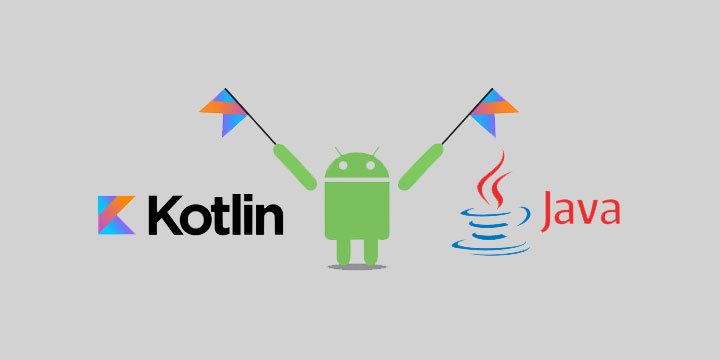Android app development is one of the most important and popular areas when it comes to Computer Science Engineering or Information Technology. Suitability of programming languages for any such project is always of topmost priority. If given choices, in order to select the most appropriate one, one must be familiar with the pros and cons of all the choices provided and then sit to analyse which one shall satisfy his or her needs as a developer. We all know that the innovation and development of computer languages occur for two main reasons—firstly to adapt to changing environments and uses and finally to implement modifications in the art of programming. Particularly for the Android App Development industry, Kotlin, developed by JetBrains invariably becomes the first choice. But that, of course, doesn’t mean that Java is way behind. There are definitely some reasons due to which Kotlin snatches the position of first priority from Java.
Shorter program for the same task—
Kotlin being a statically typed language is actually very easy to read and write. As a result of its debugging capacity also increases. Moreover, Kotlin has the quality of streamlining the entire process of coding, through its short length and lesser complexity of codes as compared with Java for the same problem. This gives a speed booster to the development procedure.
Easy Code—
With smart casts and string templates, codes written in Kotlin become easy to understand and hence easy to learn for the fresh buds in the world of computers. Moreover, the facility of no necessity of putting semicolons, enable the user to type faster and have less focus on the syntax and more focus on the problem statement. As Java is not such a succinct language, so the chances of featuring bugs within its codes become very high.
Java Compatibility—
The feature of interoperability in Kotlin is no less than the other name for Java compatibility. Codes written in both Java and Kotlin can co-exist in the same project. This is possible because Kotlin can easily access, use and exchange information from Java in many ways. The Java compatibility increases, even more, when Kotlin enables the use of Java libraries in Kotlin projects. With least number of steps, any project in Java can be very easily converted to Kotlin project, without any difference in the output of the program. Thus, developers can do this job with great rapidity and exquisite ease as there is absolutely no need to learn a brand new language. One, who is familiar with Java, is always invincibly ready to code in Kotlin. In IntelliJ or Android Studio is the only thing required as a Kotlin plugin to translate Java to Kotlin.
Eliminating Null References—
The presence of Null Reference in Java is perhaps the one and most significant disadvantage of Java. Null Reference has a value which is already reserved for indicating that the reference or the pointer is not indicating or pointing to a valid object. Ending of a list whose length is not known, failure of some action in the program always involves the use of Null Reference, though it has been referred to as the Billion Dollar Mistake by Sir Tony Hoare, a British computer scientist. Accessing a member of a null reference result in a null reference exception. This is one of the major drawbacks of Java in which it is called a Null Pointer Exception or NPE. Kotlin’s type system is aimed to eliminate Null Pointer Exception from the code. The only possible causes of NPE’s may be:
- An explicit call to throw Null Pointer Exception ( );
- Usage of the “!!” operator
- Some data inconsistency with regard to initialization
A Solution to Some Flaws of Java—
Java has many flaws, one of them definitely being the problem of Null Point Exception. Kotlin has inherited different features from languages like C# and mainly from Scala, to solve such hurdles. In spite of being one of the most recent computer programming languages, Kotlin has different properties which come directly from Pascal. Kotlin eliminates the boilerplate code, greatly eradicate possible errors. It possesses features like delegations, late initializations. It also addresses type safety in lists, which is a major problem in Java. It was very easy to type a wrongly typed variable to a list before generics came along. This would typically lead to blowing up during the run time because the compiler does not detect it.







